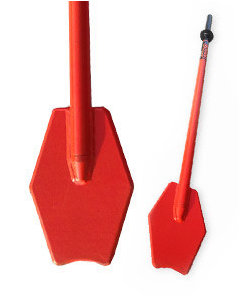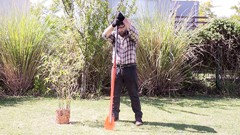Digging/Dividing up big mounds of Miscanthus
stimpy926
17 years ago
Featured Answer
Comments (36)
donn_
17 years agohemnancy
17 years agoRelated Professionals
Birmingham Landscape Architects & Landscape Designers · Darien Landscape Contractors · Elkridge Landscape Contractors · Hannibal Landscape Contractors · Long Beach Landscape Contractors · Newberg Landscape Contractors · Washington Landscape Contractors · Webster Groves Landscape Contractors · West Allis Landscape Contractors · Chanhassen Solar Energy Systems · El Mirage Solar Energy Systems · Alamo General Contractors · Ewing General Contractors · Linton Hall General Contractors · Park Forest General Contractorsdeep_roots
17 years agodeep_roots
17 years agodonn_
17 years agogardenlady48
17 years agodeep_roots
17 years agodonn_
17 years agoritacindy
17 years agodeep_roots
17 years agodeep_roots
17 years agoachnatherum
17 years agodeep_roots
17 years agodonn_
17 years agodeep_roots
17 years agostimpy926
17 years agodeep_roots
17 years agonanahanna
17 years agodeep_roots
17 years agodeep_roots
15 years agodonn_
15 years agojvan
15 years agodeep_roots
15 years agotroyn
14 years agostimpy926
14 years agopetec-sj
14 years agowillowmist
13 years agoCindy (5a)
8 years agoCindy (5a)
8 years agolast modified: 8 years agoEldorado Bambu
8 years agoJohn Markowski
8 years agoeldorado bambu
8 years agomcmary
6 years agomcmary
6 years agogardengal48 (PNW Z8/9)
6 years ago
Related Stories

GARDENING GUIDESGarden Myths to Debunk as You Dig This Fall and Rest Over Winter
Termites hate wood mulch, don’t amend soil for trees, avoid gravel in planters — and more nuggets of garden wisdom
Full Story
TRADITIONAL HOMESHouzz Tour: A Divided London Home Comes Together Again
A Victorian that had been converted into flats is restored to an elegant single-family home, with a new kitchen-dining area
Full Story
DECORATING GUIDESSwitching Up a Colonial Home to Suit a Modern Family
Floor plan labels are thrown out the window as a designer helps a family shape rooms to fit the way they live
Full Story
DECORATING GUIDES13 Ways to Spiff Up Your Closet — and Your Dressing Routine
Be a wardrobe mistress or master with these decorating, storage and dressing inspiration ideas
Full Story
LIFEWhen a Household Divides — How to Reinvent Your Home Style
Consider starting over an opportunity to discover yourself anew. Here, some insight to help you create a freshly inspiring home
Full Story
LIFEHouzz Call: Show Us the House You Grew Up In
Share a photo and story about your childhood home. Does it influence your design tastes today?
Full Story
FALL GARDENING7 Reasons Not to Clean Up Your Fall Garden
Before you pluck and rake, consider wildlife, the health of your plants and your own right to relax
Full Story
KITCHEN DESIGNKitchen Confidential: Amp Up Your Storage With Pullouts
See 12 types of cabinet pullouts that make your cooking and cleaning items easier to find and use
Full Story
DECORATING GUIDESBudget Decorator: 12 Ways to Perk Up Your Home for Fall
Get crafty or shop strategically to give your nest that extra-special touch while you’re cozying up on chilly days
Full Story
FARM YOUR YARD9 Ways to Change Up Your Vegetable Garden for the Coming Season
Try something new for edible plantings that are more productive than ever
Full StoryMore Discussions









donn_